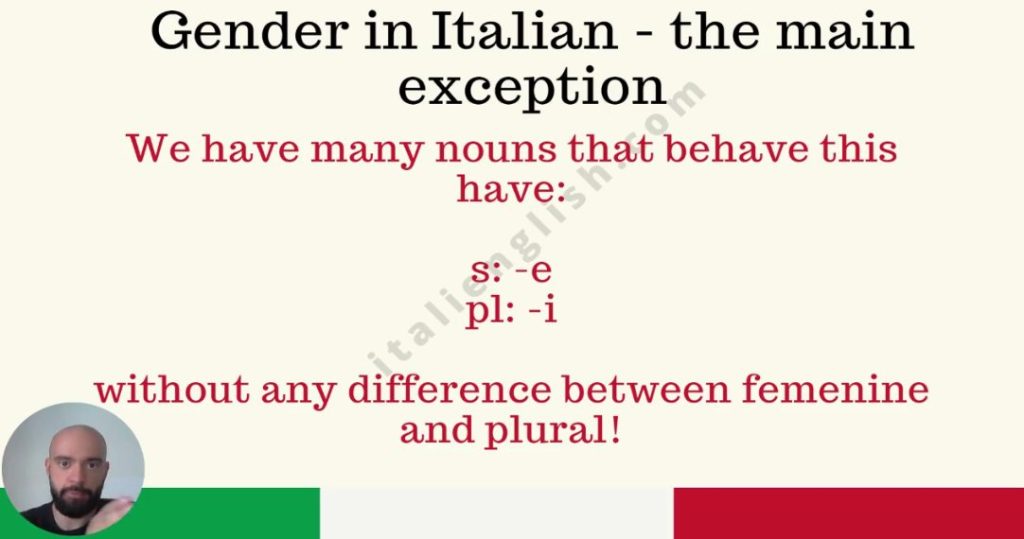Ciao!
Welcome back to this comprehensive guide on Italian grammar. In this blog post, we will delve into the intriguing topic of gender and number in Italian nouns, with a particular focus on the singular-plural exception. I’ll be your guide on this linguistic journey as we navigate through the complexities of Italian noun endings, understanding how to identify their gender and number, and uncovering the key role that articles play in this process. So, let’s dive in and unravel the secrets of this unique exception!
Content
The General Rule
Before we explore the fascinating exception, let’s quickly recap the general rule for gender and number in Italian nouns. In Italian, nouns have gender, and they are either masculine or feminine. Singular masculine nouns typically end in “-o,” while singular feminine nouns end in “-a.” For example, “un libro” (a book) is masculine, and “una penna” (a pen) is feminine. In the plural form, masculine nouns end in “-i,” and feminine nouns end in “-e.” For instance, “libri” (books) is masculine plural, and “penne” (pens) is feminine plural.
The Singular-Plural Exception
Now, let’s explore the intriguing exception that adds a twist to the general rule. There are many Italian nouns that behave differently in the singular and plural forms.
In the singular, they end in “-e,” and in the plural, they end in “-i.” What’s fascinating is that this exception applies regardless of the noun’s gender, meaning both masculine and feminine nouns follow this pattern.
For example:
- “L’animale” (the animal) is a masculine noun ending in “-e” in the plural, becoming “gli animali.”
- “La situazione” (the situation) is a feminine noun ending in “-e” in the plural, becoming “le situazioni.”

Identifying the Gender of Singular Nouns
You might wonder how to identify the gender of a singular noun that ends in “-e,” especially in cases where the noun’s gender is not immediately evident. The key to unraveling this mystery lies in the articles used with the noun.
In Italian, articles play a crucial role in indicating the gender and number of a noun. The article “un” is singular masculine, and the article “una” is singular feminine. Similarly, “il” is also singular masculine, while “la” is singular feminine.
So, when you encounter a singular noun that ends in “-a,” pay attention to the article used with it. If the noun is preceded by “un” or “il,” it’s singular masculine. On the other hand, if it’s preceded by “una” or “la,” it’s singular feminine.
Do you like what you’ve read so far? Wanna grab a FREE 4-videos series? Subscribe to my newsletter!

I’ll notify you of new articles and send exclusive content. Don’t worry! No spam, no unwanted emails, and no sharing your data with third parties.